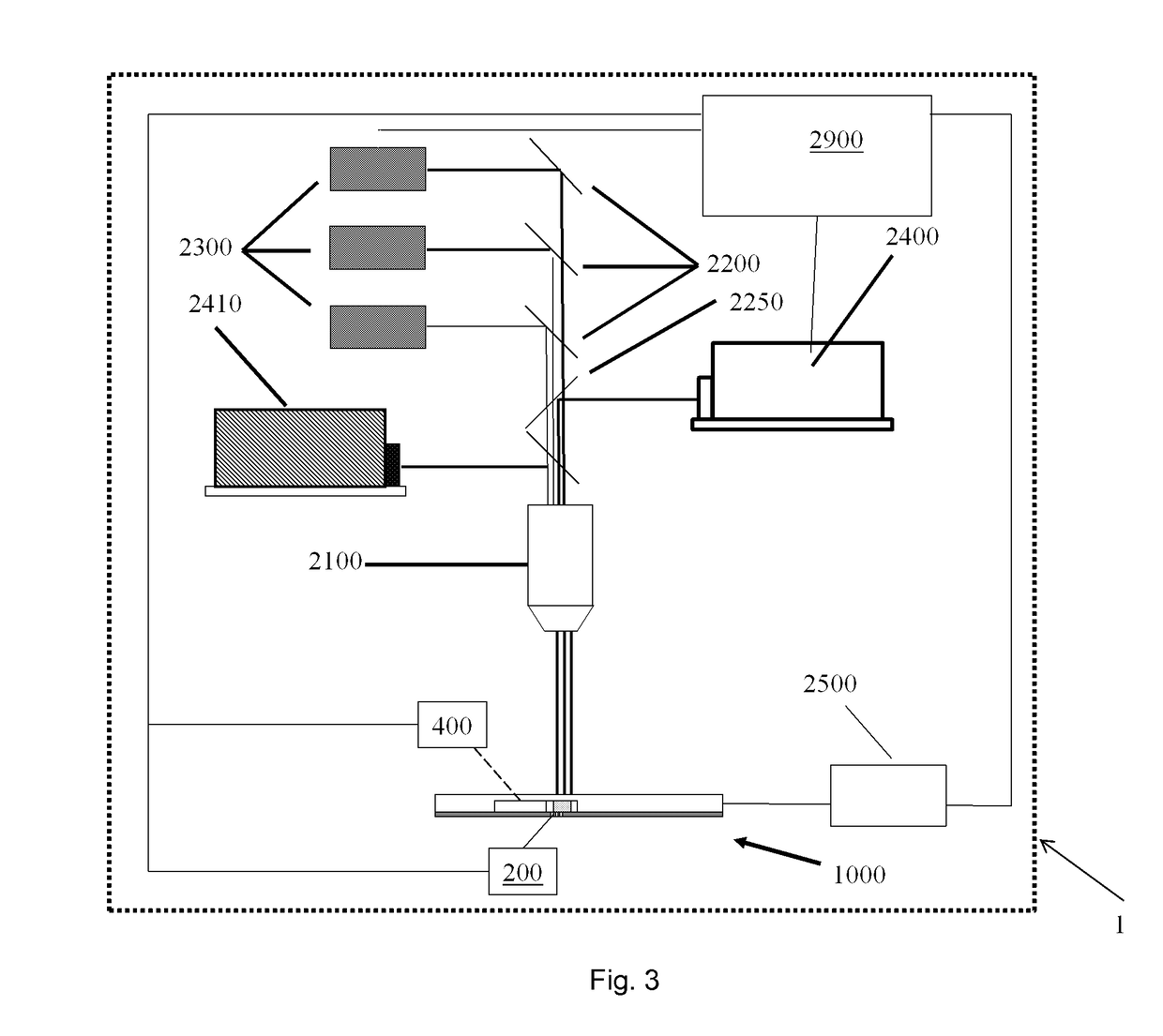Process for sorting cells by microfabricated components using a nuclease
a technology of microfabricated components and nucleases, which is applied in the direction of fluid controllers, laboratory glassware, chemistry apparatus and processes, etc., can solve the problems of large and expensive systems of flow cytometers, difficult and costly sterilization procedures, cell damage or loss of functionality, etc., to reduce or eliminate clogging, reduce the effect of heat produced and improving efficiency
- Summary
- Abstract
- Description
- Claims
- Application Information
AI Technical Summary
Benefits of technology
Problems solved by technology
Method used
Image
Examples
examples
Process for Manufacturing of Cation-Independent Nuclease
[0141]A suitable manufacturing process for a cation-independent nuclease is shown in FIG. 13. The process starts in step S100. In the step S200, the coding sequence for a DNA degrading protein (nuclease) was cloned into a plasmid vector under the control of an inducible promoter. In step S300, the recombinant vector was transformed into Escherichia coli cells. In step 400, clones which express the nuclease were selected and of these cell banks were generated. When recombinant E. coli cells are grown in a liquid complex medium and expression of the recombinant gene is induced (step S500), the cells express a nuclease in the cytosol of the cell in step S600. Under standard conditions the nuclease is expressed in an insoluble, non-active conformation as so called inclusion bodies. By adjustment of particular cultivation parameters such as temperature, time point of induction and expression duration, up to 50% of the nuclease can b...
PUM
| Property | Measurement | Unit |
|---|---|---|
| temperatures | aaaaa | aaaaa |
| temperatures | aaaaa | aaaaa |
| angle | aaaaa | aaaaa |
Abstract
Description
Claims
Application Information
 Login to View More
Login to View More - R&D
- Intellectual Property
- Life Sciences
- Materials
- Tech Scout
- Unparalleled Data Quality
- Higher Quality Content
- 60% Fewer Hallucinations
Browse by: Latest US Patents, China's latest patents, Technical Efficacy Thesaurus, Application Domain, Technology Topic, Popular Technical Reports.
© 2025 PatSnap. All rights reserved.Legal|Privacy policy|Modern Slavery Act Transparency Statement|Sitemap|About US| Contact US: help@patsnap.com



